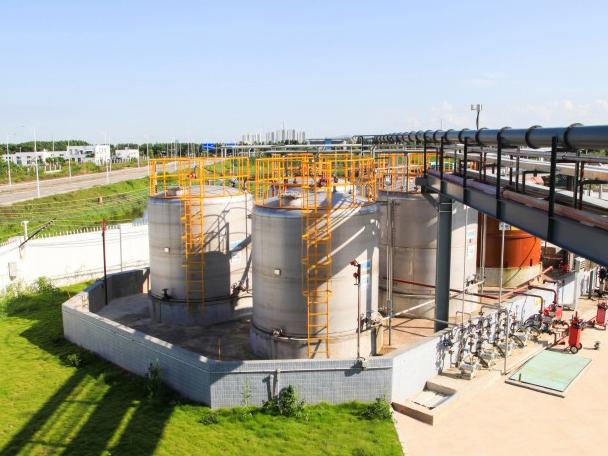How to deal with wastewater containing N-methylpyrrolidone
A new product line of the company uses solvents such as N-methylpyrrolidone (NMP), which leads to the generation of N-methylpyrrolidone (NMP) pollutants in the discharged process wastewater or wastewater from cleaning equipment. New wastewater The volume is about 150m3/d.
However, the enterprise sewage treatment station cannot properly treat the newly added process wastewater, the main reason is
① Insufficient design volume of sewage treatment station;
② Sewage treatment stations cannot handle wastewater with "high concentration, complex composition, and poor biochemical properties";
③ Lack of pretreatment process, low efficiency of biochemical treatment.
Therefore, it is imminent for enterprises to add or renovate sewage treatment stations, and the process wastewater can be treated or reused up to the standard through the wastewater treatment process.

What should I do with N-methylpyrrolidone (NMP)?
In our actual case, not only the concentration of this type of wastewater is quite high, but the COD concentration of some wastewater is 50,000-100,000 mg/L, and the local sewage discharge standard is also quite high, so design, commissioning, and operation are required. It took a lot of effort to complete it.
① Iron-carbon micro-electrolysis
The iron-carbon micro-electrolysis treatment method mainly uses the corrosion principle of metal to form a primary battery, build a reaction pool, and process the organic matter in the pool. During the reaction process, the iron element changes from zero-valent state to ferrous ion through electrolysis.
At this time, iron ions have strong adsorption, which can attract charged particles in organic matter, and gradually form iron sludge, which has obvious removal effect on large particle organic matter in wastewater.
②Biochemical treatment
Biochemical treatment can be divided into anaerobic biological treatment and aerobic biological treatment according to the oxygen demand of microorganisms. The use of microorganisms to degrade organic matter in water can be divided into aerobic treatment and anaerobic treatment according to the oxygen demand of microorganisms.
The method has the advantages of low operating cost, high removal rate of organic matter, and less energy consumed in the treatment process.
③Membrane treatment
Membrane is a microporous filter material. The basic principle of its separation is to control the cut-off particle size by controlling the pore size of the micropore, and to separate various dissolved ions in the solution in a targeted manner.
Due to the upgrading of water treatment discharge standards and the continuous maturity of membrane material manufacturing technology in recent years, membrane separation technology has been widely used in the field of water treatment. According to the size of the membrane pore size, it can be divided into microfiltration, ultrafiltration, nanofiltration and reverse osmosis.